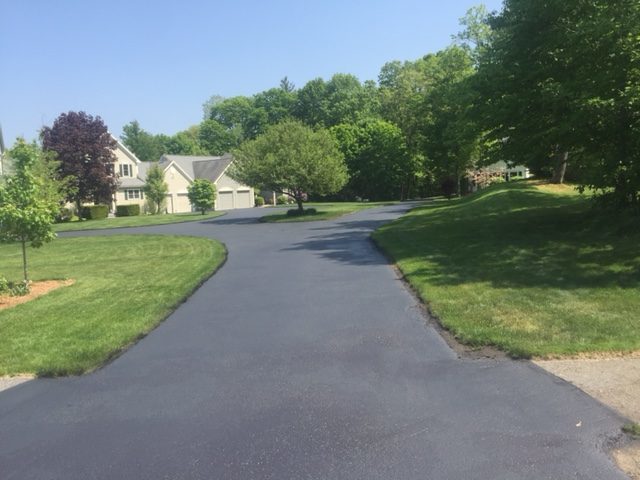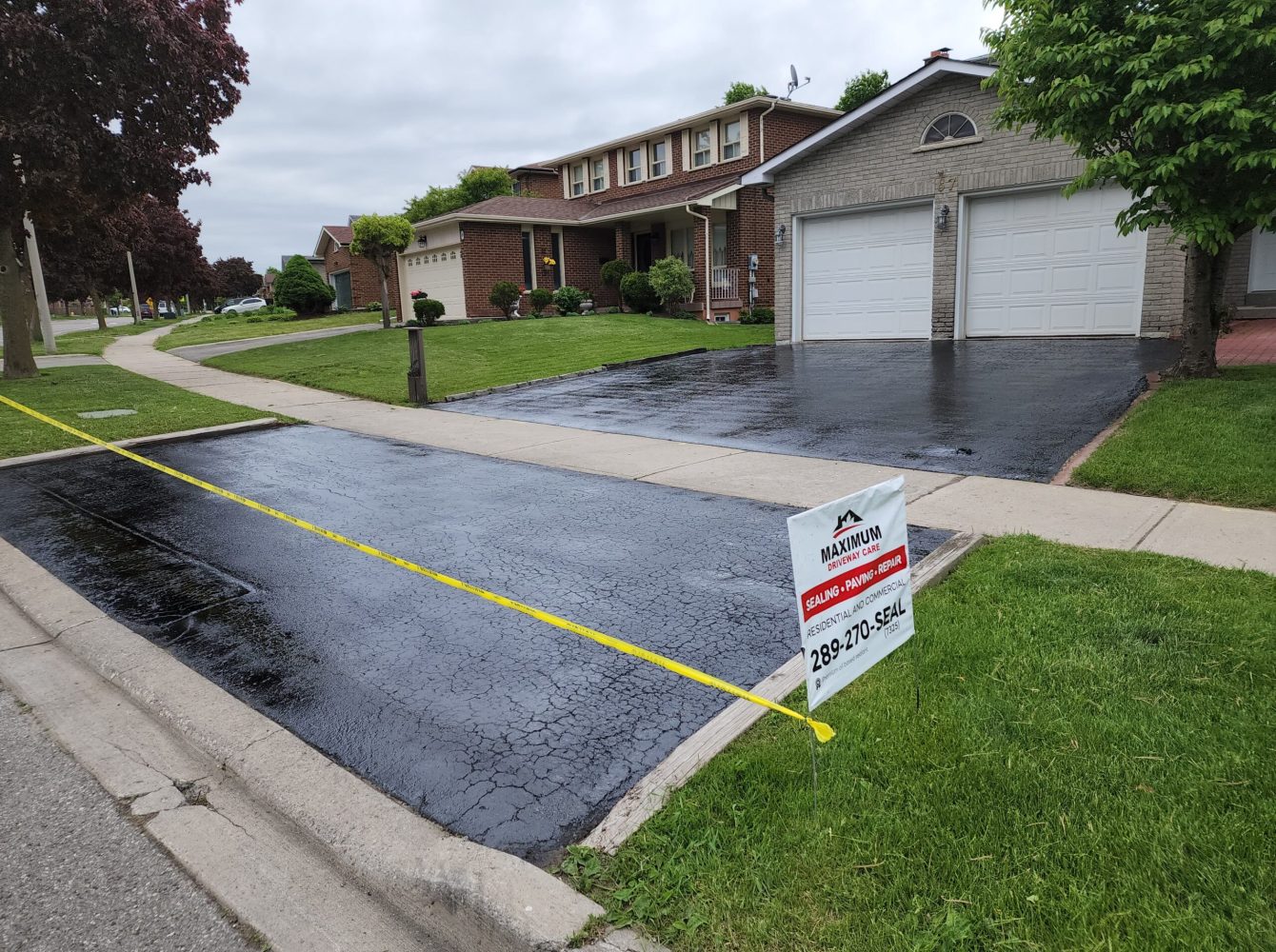Release the Possible: Regrading and Asphalt Sealing for Business Areas
Release the Possible: Regrading and Asphalt Sealing for Business Areas
Blog Article
Warm Mix Asphalt: A Sustainable Solution for Pavement
Warm Mix Asphalt (HMA) has emerged as a leading lasting choice for pavement services, offering a myriad of innovative modern technologies and environmental advantages. Its capability to lower and reuse products energy consumption presents an engaging situation for its fostering in road building tasks. Furthermore, the lasting performance and durability of HMA make it a preferred choice for infrastructure development. As the demand for eco-friendly construction methods grows, exploring the subtleties of HMA's sustainability can offer valuable understandings into the future of pavement options.
Ecological Advantages of Hot Mix Asphalt

Additionally, Hot Mix Asphalt assists to minimize metropolitan heat island impacts. Its dark shade takes in sunlight, lowering the quantity of warmth showed back into the ambience compared to lighter-colored pavements. This can reduce ambient temperatures in city areas, lowering the demand for cooling and ultimately decreasing energy usage.
In enhancement, Hot Mix Asphalt adds to improved stormwater administration. Its porous nature permits water to penetrate the sidewalk and charge groundwater supplies, lowering drainage and the threat of flooding. These ecological benefits make Hot Mix Asphalt a lasting choice for leading highways and roads.
Energy Effectiveness in HMA Manufacturing
Is power performance a vital consider the production of Hot Mix Asphalt (HMA)? Definitely. Power plays a significant role in the production of HMA, influencing both price and ecological sustainability. One crucial element of power performance in HMA manufacturing is using warm mix asphalt (WMA) modern technologies (regrading). WMA allows for the mixing and placement of asphalt at lower temperatures compared to typical warm mix asphalt, leading to lowered energy consumption during manufacturing. This procedure not just lowers fuel usage however likewise lowers greenhouse gas emissions, making it a more eco-friendly alternative.
Moreover, innovations in plant innovations have actually led to even more energy-efficient HMA production processes. By maximizing power usage in HMA production, the sector can lower its carbon impact while keeping high-quality pavement materials.
Recyclability of Hot Mix Asphalt
The recyclability of Warm Mix Asphalt (HMA) is a pivotal element of its sustainability and lasting environmental influence. HMA is one of the most recycled products in the USA, with over 100 million tons of reclaimed asphalt pavement (RAP) being reused annually in new sidewalk building. Recycling HMA uses several environmental benefits, such as minimizing the requirement for virgin products, decreasing power intake during production, and decreasing the quantity of waste sent out to garbage dumps.
The procedure of reusing HMA involves milling the existing sidewalk, squashing it into smaller sized items, and mixing it with new accumulation and asphalt binder to produce a recycled mix. This recycled mix can commonly do in addition to or even far better than more info here standard HMA, while calling for fewer basic materials and creating reduced greenhouse gas discharges. By integrating RAP into brand-new pavement projects, roadway firms can save natural deposits, decrease expenses, and decrease the environmental impact of road construction and upkeep tasks. Generally, the recyclability of HMA plays a significant duty in promoting sustainable techniques within the pavement industry.

Long-Term Efficiency of HMA
Asphalt pavements demonstrate longevity and resilience over a prolonged duration, mirroring the long-term efficiency of Hot Mix Asphalt (HMA) The durability of HMA can be associated to its ability to hold up against hefty web traffic tons, rough climate condition, and the results of aging. Research studies have actually revealed that properly designed and effectively constructed HMA pavements can last for 20 years or more with normal upkeep. The key to maximizing the lasting performance of HMA hinges on using high-quality materials, adhering to ideal techniques in building, and carrying out effective upkeep strategies. Correct drainage, regular evaluations, and timely fixings are necessary for protecting the architectural integrity of HMA pavements over time. Additionally, innovations in HMA technology, such as the use of polymer-modified binders and warm mix asphalt, have actually even more improved the resilience and durability of HMA sidewalks. By prioritizing high quality construction and over here upkeep techniques, HMA continues to show itself as a cost-effective and sustainable service for durable pavement framework.

HMA: Durability and Sustainability
Demonstrating both longevity and sustainability, Warm Mix Asphalt (HMA) has ended up being a foundation in the construction of lasting sidewalk infrastructures - commercial parking lot paving. HMA's sturdiness originates from its capacity to hold up against hefty lots, harsh weather, and high website traffic quantities, making it a reputable option for roads, highways, and airport paths. The make-up of HMA, which typically consists of aggregates, binder, and filler, plays an essential function in boosting its durability and resistance to damage
In addition, HMA's sustainability lies in its recyclability and energy-efficient manufacturing procedure. The capacity to recycle redeemed asphalt pavement (RAP) in new HMA combinations minimizes the need for virgin materials and decreases the environmental influence of pavement construction and maintenance. In addition, the energy effectiveness of generating HMA hinges on its lower blending temperatures compared to other pavement materials, bring about decreased power intake and greenhouse gas emissions.
Conclusion
To conclude, hot mix asphalt (HMA) provides a lasting option for pavement with its eco-friendly qualities. HMA's recyclability, additional info energy efficiency in production, and long-term durability make it an environmentally friendly option for roadway building and construction. By saving natural deposits, decreasing waste, and decreasing greenhouse gas emissions, HMA plays a critical duty in advertising sustainability in infrastructure growth. Its ability to alleviate city warm island impacts better underscores its importance in producing resistant and environmentally mindful sidewalk systems.
HMA is one of the most recycled materials in the United States, with over 100 million tons of redeemed asphalt pavement (RAP) being recycled each year in new pavement construction.The process of reusing HMA includes grating the existing sidewalk, crushing it right into smaller pieces, and blending it with new accumulation and asphalt binder to create a recycled mix.Asphalt pavements demonstrate durability and resilience over a prolonged period, mirroring the long-term performance of Hot Mix Asphalt (HMA) In addition, developments in HMA modern technology, such as the usage of polymer-modified binders and cozy mix asphalt, have actually even more boosted the resilience and durability of HMA pavements. The ability to reuse redeemed asphalt pavement (RAP) in brand-new HMA mixtures lowers the demand for virgin materials and decreases the ecological effect of sidewalk building and upkeep.
Report this page